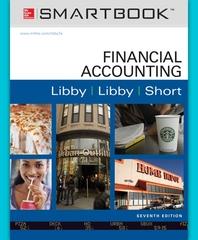Question
Q1. XYZ sells a variety of merchandise to retail stores on open account, but it insists that any customer who fails to pay an invoice
Q1. XYZ sells a variety of merchandise to retail stores on open account, but it insists that any customer who fails to pay an invoice when due must replace it with an interest-bearing note. The company adjusts and closes its accounts at January 31. Among the transactions relating to notes receivable were the following:
Oct. 1 Received from a customer (ABC) a nine-month, 12% note for Rs.21,000 in settlement of an account receivable due today.
July 1. Collected in full the nine-month, 12% note receivable from Party Plus, including interest.
Record the journal entries. Give closing entries necessary at the end of the year on Jan 31.
Q2. Herbor Company uses a periodic inventory system. The company's records show the beginning inventory of product No.T12 on January 1 and the purchases of this item during the current year to be as follows:
Jan. 1 Beginning inventory900 units @ Rs.109,000
Feb.23 Purchase1200 units @ Rs.1113,200
Apr. 20 Purchase3,000 units @ Rs.11.2033,600
May. 4 Purchase4,000 units @ Rs.11.6046,400
Nov. 30 Purchase900 units @ Rs.1311,700
Total10,000 unitsRs.113,900
After physical count it was realized that 8400 units were sold during the year. Determine the cost of the ending inventory, based on each of the following methods of inventory valuation.
a) Average cost b) LIFOc) FIFO
Which of the above methods (if any) results in the same ending inventory valuation under both periodic and perpetual costing procedures? Explain.
Step by Step Solution
There are 3 Steps involved in it
Step: 1

Get Instant Access to Expert-Tailored Solutions
See step-by-step solutions with expert insights and AI powered tools for academic success
Step: 2

Step: 3

Ace Your Homework with AI
Get the answers you need in no time with our AI-driven, step-by-step assistance
Get Started


